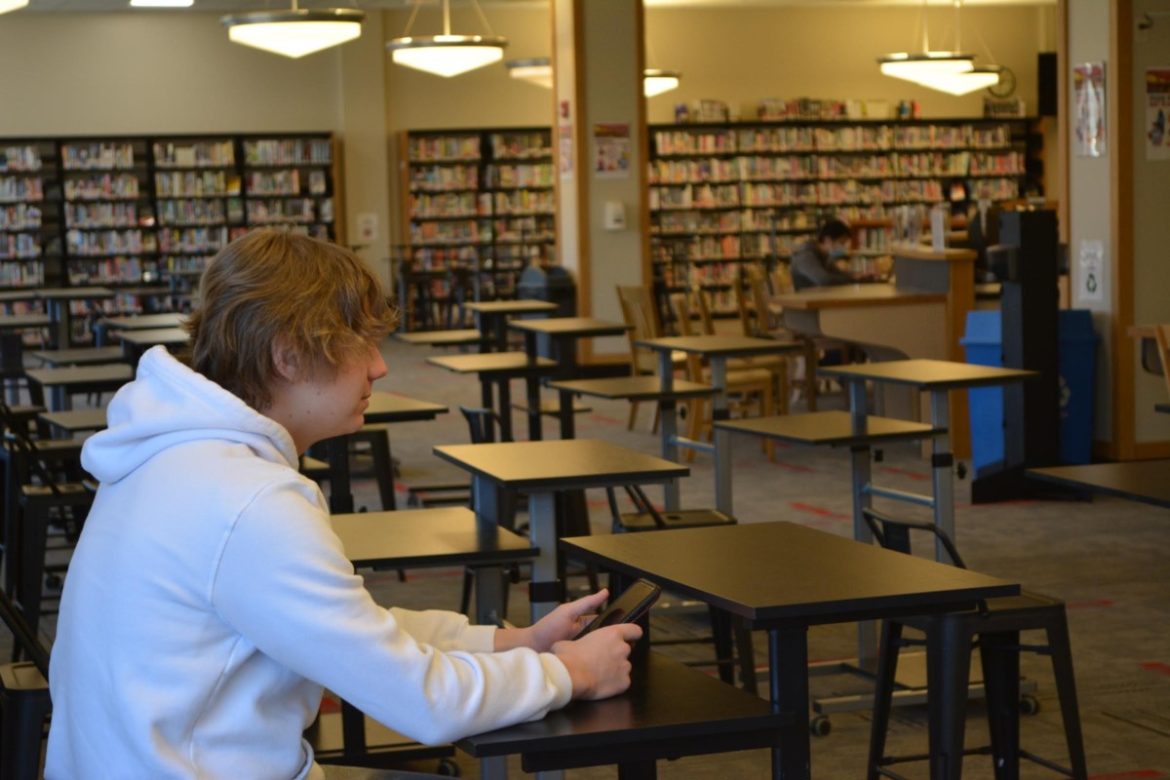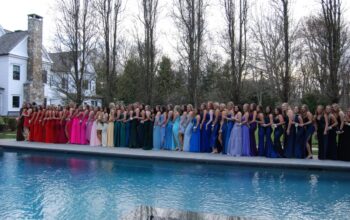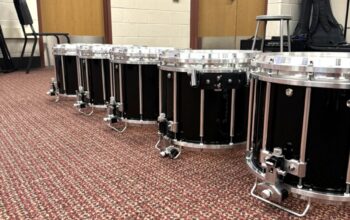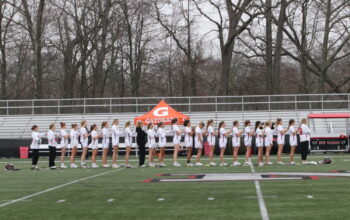Abigail Cushman, Executive Editor
@abigailccourant
In September of 2019, a person entering the library would play witness to a hub of life. At the upper tables, students were likely chomping on chips or fruit while they chatted with friends. You could pass through this casual restaurant environment only to discover that its conversation echoed down into the lower section of the library. There, groups of people congregated around large tables to socialize and work. On the outskirts of the lower area, other students found recluse in the quiet-section desk cubbies as they worked individually.
Today, the library paints a different picture. As a part of the community’s Covid mitigation strategies, the large upper tables have been replaced with dispersed seating and white board tables. In the lower area, single-seat desks and four person tables make up the inner circle. Conversation there is far more discreet, and no food can be found anywhere in the library during lunchtime. Hence, restaurant chatter is a figment of the past.
Upperclassmen can attest to this shift. “It’s definitely more isolated and there are fewer people,” senior Zoey Bennett said. “There used to be these long tables that everyone would study at together. It was a place where you could make friends, especially as a freshman.” Nevertheless, Zoey believes table limitations are important to keep the school safe and clean.
In addition to altered seating, block scheduling may have also impacted the library environment. “I think fewer people go to the library now because when you have a free you have an hour and a half, so most people will leave campus,” Zoey said. Before Covid hit and block scheduling was introduced, students were deterred from leaving the school because of the 45 minute periods and the closed campus. For this reason, Zoey would see relatively more juniors and seniors spending time in the library.
Student traffic in the library could also be decreasing as its resources become more digital. According to Library Department Chair Michelle Luhtala, the library’s digital collection is now embedded in Schoology and becoming integrated into Class Link. “When we work with classes, instead of putting books on a shelf in the library we actually create digital bookshelves,” she said.
Ms. Luhtala had been working to digitize the library for over ten years, and when school went remote in March of 2020 it became critical. The pandemic further incentivized library digitization when it began affecting supply chains. “It’s really hard to get books for libraries, and all of our vendors have big disclaimers on their websites saying shipments are slow. So that’s pushed us in the direction of eBooks a little bit further,” Ms. Luhtala said.
As digitization increases, Junior Gregory Lamoreaux has also watched the library become more quiet, and thinks it is no longer a hangout spot. “You can’t eat in there anymore, so people just go to the lunchroom to hangout instead. The library has become more of a study area in general which is what it should be,” he said.
The changes both Zoey and Gregory have observed are by no accident. According to Ms. Luhtala, taking the lunch option out of the library was not just a result of Covid, but also part of a larger effort to decrease the library population. “Kids left their food everywhere and it was a constant struggle. There were too many kids and that made it impossible for students to work,” she said. “Now we’ve had an opportunity to reset.”
In order to maintain the pacified and minimized library population, freshmen attend assigned classroom study halls during their free periods instead of going to the library. This change has been beneficial because it transitions freshmen into having frees. “It’s always been a difficult transition from being with an adult in the building at all times at Saxe to possibly 160 free minutes in a day. Study hall builds students’ ability to catch up on work and decreases homework during free periods,” Ms. Luhtala said.
According to this model, freshmen like Addie Tauber have very little interaction with the library. “I feel like I could go in the library if I really wanted to, but I just don’t really get to use it that often,” she said. If given the opportunity to go anywhere in the building during free time, Addie would probably sit at the tables by the main office. “I use them for mask breaks sometimes because they’re right by the main entrance and the windows.”
In contrast, sophomore Jack Sheffield defaults to the library when he has free time. “I use the library for each study hall unless I have lunch. Even if I don’t have work, I just go in there and talk with friends,” he said. Jack likes that the library doesn’t get too crowded. “I’d say it’s a big enough space that you can have a lot of people in there and still find your own place.”
Jack’s perception of the library reflects on Ms. Luhtala and the school administration’s efforts to reset the library atmosphere. Despite spanning different grades and different Covid-related high school circumstances, Zoey, Gregory and Jack all spend time with friends and get work done in the lower section of the library. “There’s a lot of things that we’ve done as a result of Covid and that we think we’re going to keep doing,” Ms. Luhtala said. “We’re feeling very positive about moving forward.”





